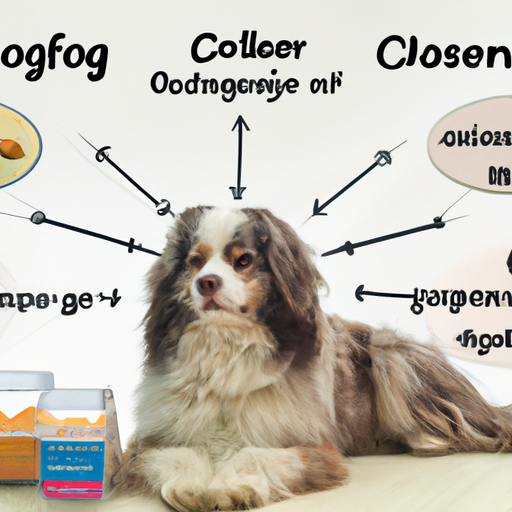As a caregiver, you’re always looking to provide the best possible care for your furry companion. In this guide, we’ll explore how you can help your dog manage their cortisol levels, which may in turn help them feel more relaxed and stress-free.
Understanding Cortisol and Its Effects on Dogs
Cortisol, often referred to as the “stress hormone,” is produced by the adrenal glands in response to stressful situations. While it’s normal for dogs to have cortisol in their systems, prolonged high levels can lead to health issues such as anxiety, weight gain, and weakened immune function.
Identifying Signs of High Cortisol in Dogs
To provide effective care, it’s important to recognize the signs of high cortisol levels in dogs. These may include:
- Increased thirst and urination
- Changes in appetite
- Unusual weight gain
- Restlessness or anxiety
If you notice any of these signs, it’s recommended to consult with your vet for a definitive diagnosis and treatment plan.
Five Ways to Decrease Cortisol in Dogs
-
Regular Exercise: Regular physical activity helps to naturally reduce cortisol levels. Aim for at least 30 minutes of exercise each day, whether it’s a walk, playtime, or obedience training.
-
Healthy Diet: A balanced diet is key in maintaining overall health and managing cortisol levels. Avoid foods high in sugar and opt for those rich in Omega-3 fatty acids and B vitamins.
-
Relaxation Techniques: Techniques such as massage, music therapy, and aromatherapy can help to reduce stress and cortisol levels in dogs.
-
Positive Reinforcement Training: Rewarding your dog for good behavior rather than punishing for bad behavior helps to create a positive environment, reducing stress and cortisol levels.
-
Regular Vet Check-ups: Regular visits to the vet can help to detect any health issues early, allowing for prompt treatment and management of cortisol levels.
The Role of Medication in Controlling Cortisol Levels
In some cases, medication may be necessary to control high cortisol levels. There are several options available, each with their own pros and cons. Always consult with your vet to determine the best course of action for your pet.
| Medication | Pros | Cons |
|---|---|---|
| Trilostane | Effective in managing cortisol levels | Can cause side effects such as vomiting and lethargy |
| Mitotane | Can significantly lower cortisol levels | Requires close monitoring due to potential side effects |
Frequently Asked Questions
Q: Can high cortisol levels in dogs be life-threatening?
A: In severe cases, high cortisol levels can lead to serious health issues. However, with early detection and proper management, it’s usually controllable.
Q: How often should I take my dog for vet check-ups?
A: Typically, dogs should have a vet check-up at least once a year. However, if your pet has health issues, more frequent visits may be necessary.
Q: Can I use human relaxation techniques on my dog?
A: Some human relaxation techniques can be beneficial for dogs, but always consult with a professional before trying a new method.
Q: Is medication the only way to control high cortisol levels in dogs?
A: No, lifestyle changes such as diet and exercise can significantly help manage cortisol levels.
Remember, your role as a caregiver is vital in your pet’s health and wellbeing. By staying informed and proactive, you can help your dog lead a happier, more stress-free life.



